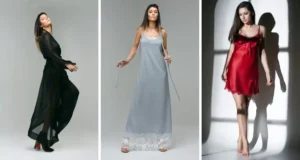The hijab is a head covering worn by some Muslim women in accordance with their religious beliefs and cultural practices. It is seen as a sign of modesty and religious piety and is often worn as a symbol of respect for the teachings of Islam.
Some women may choose to wear the hijab as a way of expressing their cultural identity or as a way of demonstrating their devotion to their faith. The decision to wear the hijab is a personal one. It is important to respect the choices of individual women in regard to their clothing and appearance.
Here are a few reasons why do females wear hijabs
To show devotion to their faith
Many women who wear the hijab do so as a way of expressing their devotion to Islam and their commitment to its teachings. The hijab is a symbol of modesty and piety in Islam, and wearing it can be seen as a way of demonstrating one’s commitment to the faith.
For some women, the hijab is an important part of their spiritual practice and is worn to express their devotion to Islam. This reason for wearing the hijab is based on the belief that the hijab is a requirement of the Islamic faith and that wearing it demonstrates one’s commitment to the religion.
To demonstrate cultural identity
For many Muslim women, the hijab is an important part of their cultural identity and is worn to express their cultural pride. In some societies, the hijab is a common part of the traditional dress worn by women, and wearing it can be seen as a way of preserving and honoring that cultural tradition.
For modesty
The hijab is often seen as a sign of modesty and is worn to cover the head and hair. In Islam, modesty is a significant value, and the hijab is often seen as a way of demonstrating this value.
Some women wear the hijab as a way to demonstrate their modesty and adhere to the teachings of Islam in this regard. These women see wearing the hijab as a form of respect for themselves and others.
For personal preference
Some women who wear the hijab do so simply because they prefer the style and find it comfortable. Wearing the hijab is a personal choice. Some women may choose to wear it simply because they enjoy how it looks or because they find it comfortable. It is important to respect the personal choices of individuals when it comes to matters of style and personal preference.
While Muslim women wear hijabs, some women in the world prefer short clothes. Read it here.
To show solidarity
Some women choose to wear the hijab as a way of expressing their solidarity with other Muslim women and as a way of showing support for the Muslim community. Wearing the hijab can also be seen as a way of demonstrating unity and solidarity with the global Muslim community.

What are the rules of a hijab?
It is important to note that the rules for wearing a hijab or head covering vary among Muslim communities and may be influenced by cultural and personal factors. Here are a few possible rules or guidelines for wearing a hijab:
Covering the head
The hijab is typically worn as a way of covering the head and hair in accordance with Islamic teachings.
Covering the neck, chest, and arms
In some interpretations of Islam, the hijab is also seen as a way of covering the neck, chest, and arms.
Wearing loose, modest clothing
Some women who wear the hijab may also choose to wear loose, modest clothing to demonstrate modesty and piety.
Following cultural customs and traditions
Muslim communities may have cultural customs and traditions regarding wearing the hijab. Some women may choose to follow these customs and traditions to express their cultural identity and pride.
Summary
The hijab is a head covering worn by some Muslim women to express their devotion to Islam and its teachings, as well as their cultural identity and pride. It is worn as a symbol of modesty and piety and is often seen as a way of demonstrating respect for oneself and for others.
There are many possible reasons why a woman might choose to wear a hijab, including to show devotion to their faith and demonstrate cultural identity, modesty, personal preference, and solidarity. The decision to wear a hijab is personal, and it is important to respect individual women’s choices regarding their clothing and appearance.
FAQ
What are some of the misconceptions about hijab?
One of the most common misconceptions is that Muslim women are forced to wear hijab, which is incorrect. Wearing a hijab is a personal choice and an act of devotion to God. Another misconception is that Muslim women wear hijab 24/7, which is not true. Women wear hijab in public or outside the home and in the presence of men who are not family members.
Why do some Muslim not wear hijab?
One reason is that they may feel uncomfortable wearing it or find it too restrictive or limiting. Another reason is that they may have received misinformation about the compulsion for women to wear hijab, and they may not know what Islam teaches. Some women may also have a weaker or stronger spiritual connection to their faith, which can influence their decision to wear a hijab.
Why do Muslim women cover their hair?
Muslim women cover their hair as a form of modesty and obedience to God’s commandments. The hijab signifies chastity, belief, and devotion to God. It is believed that the hijab protects a woman’s honor from the gaze of strangers and preserves her dignity.
What happens if you take your hijab off?
In Islam, wearing a hijab is seen as an act of devotion to God, and removing it is considered a sin. However, some Muslim scholars argue that removing the hijab is not a major sin in Islam. If a Muslim woman removes her hijab, she may face social and cultural backlash from her community, especially if she lives in a conservative society where the hijab is seen as a religious obligation or a cultural norm.
How to seek forgiveness for taking off hijab in Islam?
In Islam, seeking forgiveness for taking off the hijab involves sincere repentance and asking Allah for forgiveness. Allah is merciful and forgiving, and He can forgive all sins if He chooses. The first step is to acknowledge the sin and feel remorse for it. The person should then sincerely intend never to repeat the sin and to wear a hijab as an act of devotion to God.



